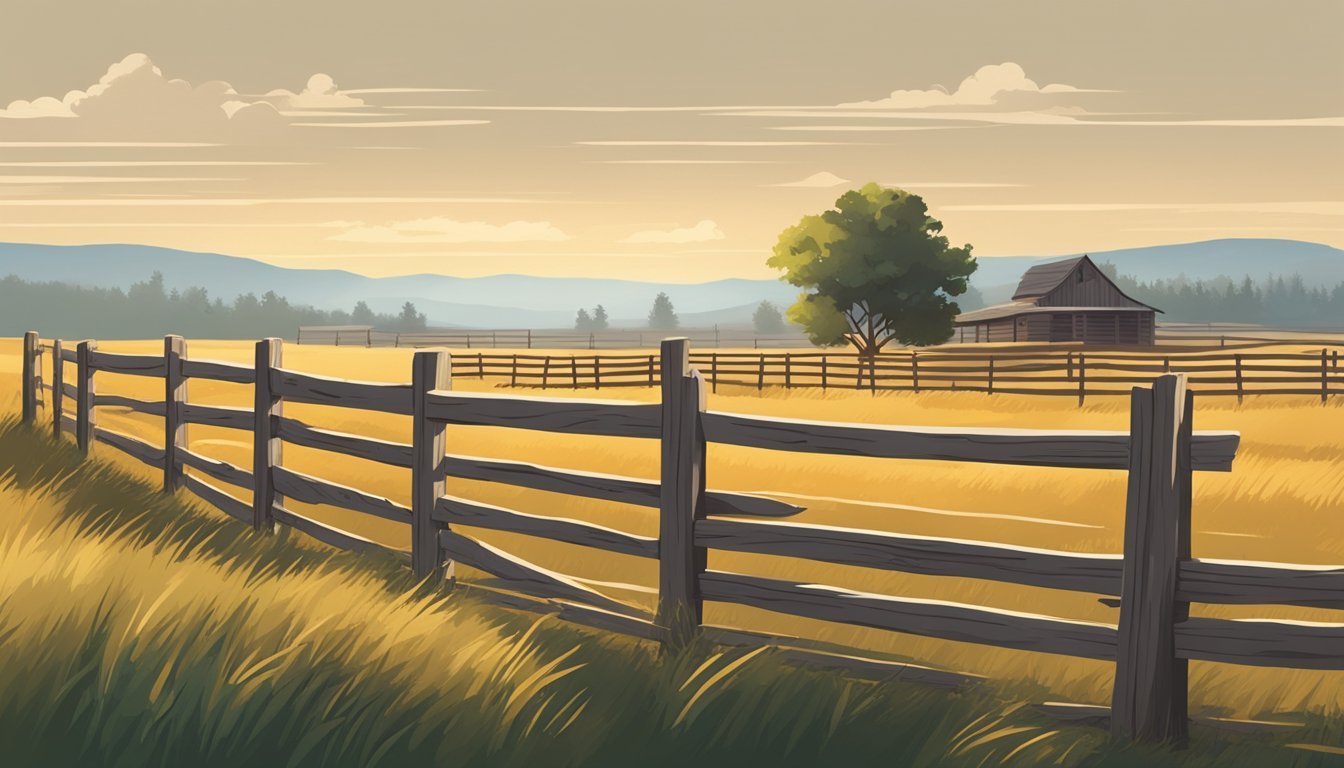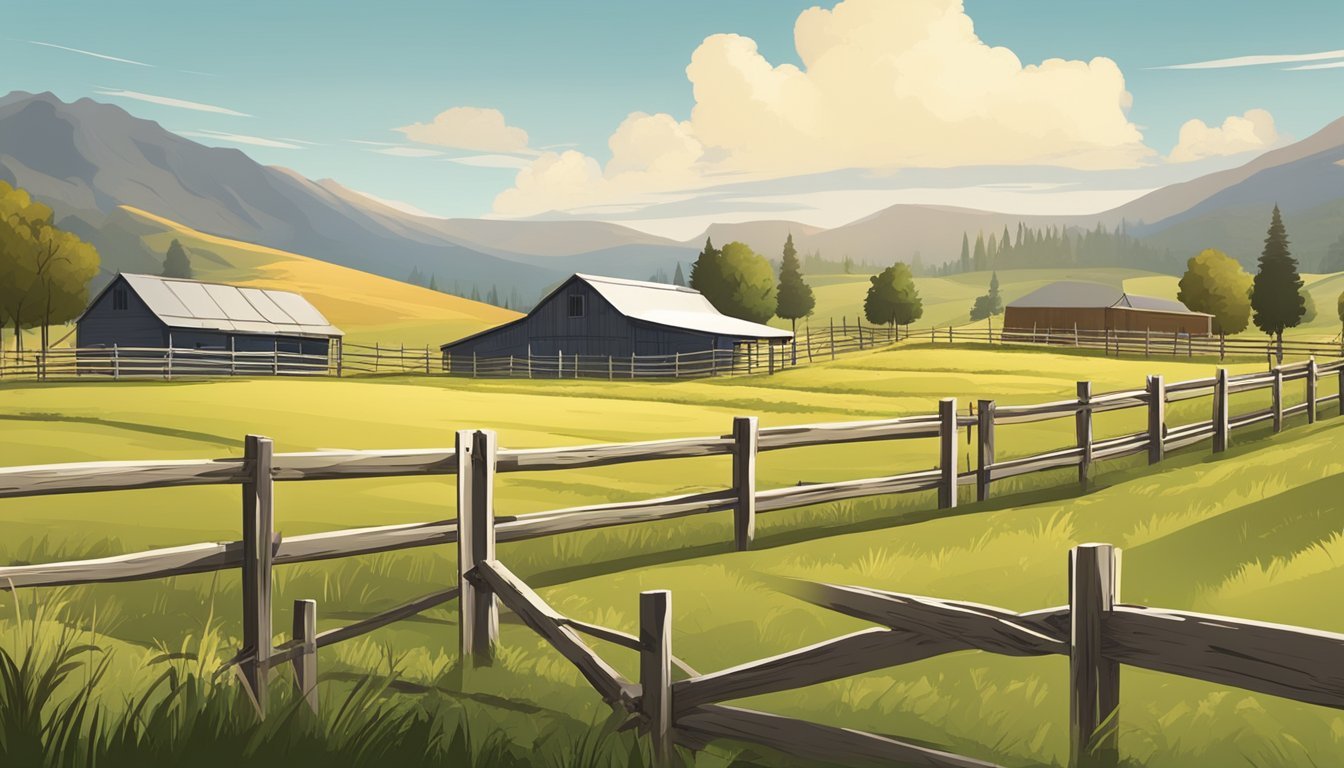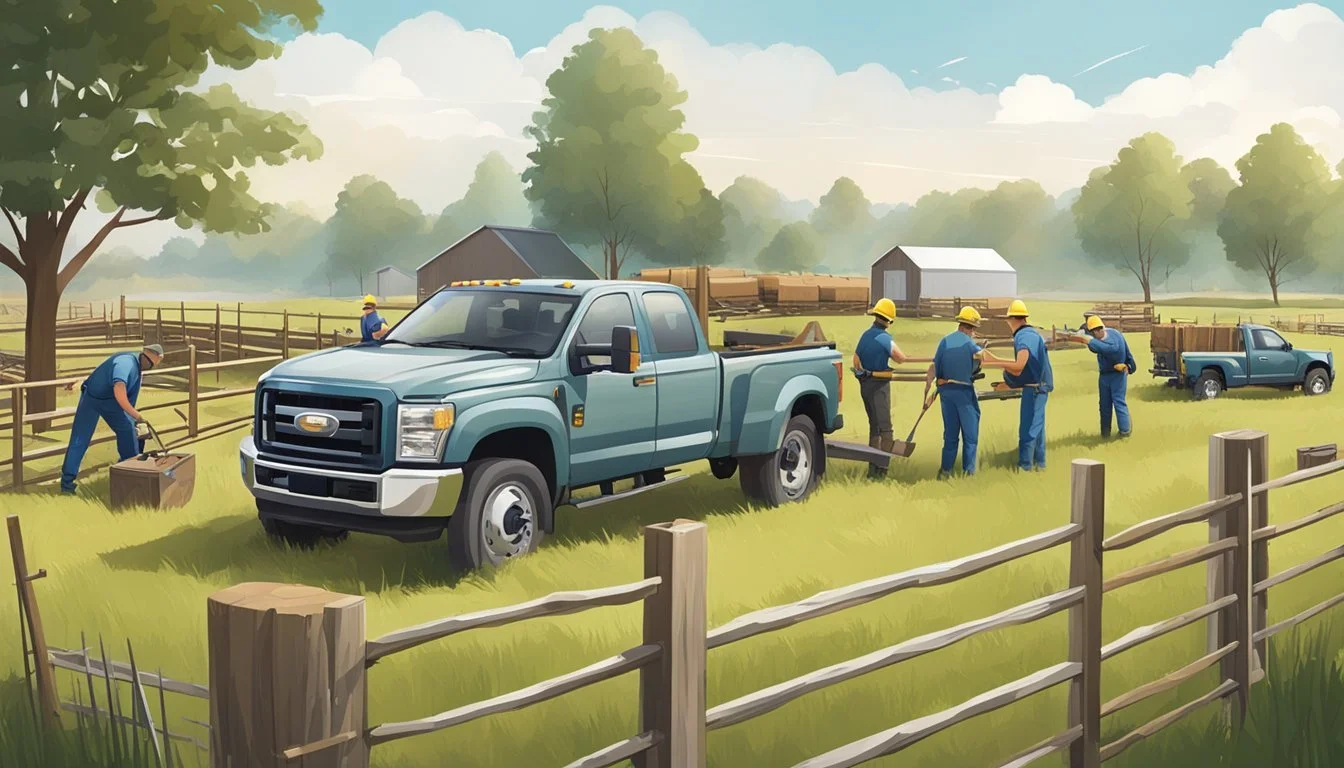Ranch Fencing Essentials
Choosing the Right Materials and Design
Ranch fencing serves various purposes, ranging from containing livestock to defining property boundaries. This essential aspect of ranch management combines practicality and aesthetics while adhering to specific regulations and requirements. As with any fencing solution, ranch owners must consider factors such as cost, durability, and ease of installation before settling on the ideal option.
Among the most popular materials for ranch fencing are wood, vinyl, and steel, offering a variety of options for a cattle panel, automatic gates, and horse rail fences. Each material provides unique advantages and drawbacks, with varying costs, maintenance requirements, and overall performance. Besides material choice, ranch owners must also address design aspects such as height, number of rails, and spacing, making it crucial to consider cattle fences, cedar split rail fences, and fence wire for any fence project. These fencing patterns can fulfill specific needs, depending on what the fence aims to contain or deter, whether it's privacy fences for the entire property or different types of fencing for farm fencing.
Finally, safety is of paramount importance when it comes to ranch fencing. Proper installation and maintenance ensure the well-being of both humans and livestock within the property. By considering key aspects such as material, design, and safety regulations, ranch fencing can effectively secure and protect one's valuable assets.
Ranch Fencing Basics
Understanding Ranch Fencing
Ranch fencing is an essential component of managing a ranch or a farm. It is designed to serve multiple purposes, such as keeping livestock contained, protecting crops, and marking property boundaries. To build an effective and long-lasting fence, it is crucial to understand the requirements and choose the right materials that suit your needs.
Choosing the Right Materials
The most common materials used in ranch fencing are wood and vinyl. Below is a quick comparison table between the two materials:
Material: Wood
Advantages:
Natural appearance
Can be painted or stained
Biodegradable
Disadvantages:
Requires maintenance
May rot or warp
Material: Vinyl
Advantages:
Low maintenance
Weather-resistant
No need for painting
Disadvantages:
Less natural look
Higher initial cost
Wood is a popular choice for traditional ranch fencing because of its natural appearance and flexibility in design. However, wood fences require regular maintenance and may eventually rot or warp over time.
Vinyl fencing is a great alternative for those looking for a low-maintenance option. This material is weather-resistant and requires minimal upkeep. Although it may have a higher initial cost, it tends to be more cost-effective in the long run.
Planning and Layout
Proper planning and layout are crucial for efficient ranch fencing. Consider the following steps to ensure a successful build:
Survey your land: Measure and mark the perimeter of your property to ensure accurate fence placement.
Determine your needs: Assess the type and number of livestock or crops you need to protect and accommodate their requirements.
Plan for entrances and exits: Designate appropriate locations for gates and walkways that will allow for easy access and movement of livestock or equipment.
Consider topography: Take into account natural obstacles, such as hills and water sources, that may affect the fence’s efficiency.
Space fence posts: Calculate the required fence post spacing and ensure that the material can support the weight and stress of the fence sections.
By taking the time to address these factors, you can create a well-planned and effective ranch fence that suits your needs and protects your investment.
Fencing Types and Purposes
Post and Rail Fencing
Post and rail fencing, also known as split rail fencing, is a traditional style of fence often found on farms and ranches. This type of fence consists of wooden posts and rails, typically arranged in a zigzag pattern. The primary purpose of post and rail fencing is to serve as a visual boundary or aesthetic addition to a landscape. Due to its open design, it provides little security or containment for livestock. However, it does offer a more natural look compared to other fence types.
Some advantages of post and rail fencing include:
Easy installation
Affordable cost and low maintenance
Environmentally friendly
Barbed Wire Fencing
Barbed wire fencing is a popular choice for securing perimeters around farms, ranches, and other rural properties. Made of twisted or braided strands of wire with sharp barbs, barbed wire fencing is designed to deter livestock or intruders from crossing the boundary. However, it is not ideal for all types of animals, such as horses, due to the risk of injury from the sharp barbs.
The benefits of choosing barbed wire fencing are:
Cost-effective and durable
Can be installed with a variety of post types
Provides a strong barrier against larger animals
Field Fence for Livestock
A field fence is a type of woven wire fence specifically designed for containing livestock. Commonly used for cattle, sheep, goats, and other large animals, this fencing option offers maximum security and containment. The wire mesh openings in field fencing are smaller toward the bottom, making it more difficult for small animals to pass through.
Advantages of using field fences for livestock include:
Effective containment for a variety of livestock sizes
Reduced risk of injury compared to barbed wire
Sturdy and long-lasting when properly maintained
Selecting the appropriate fence type for your ranch or farm depends on various factors, including the primary purpose and the type of livestock you hope to contain. Each fencing option has its benefits and drawbacks. By carefully evaluating your needs and familiarizing yourself with the different fence types available, you can make an informed decision that best suits your property requirements.
Installation Process
Setting Posts in Soil
The first step in the installation process is to set the posts in the soil. It is essential to ensure the durability and stability of the ranch fencing. Begin by marking the location of each post along the fence line. Typically, posts should be placed about 6-8 feet apart. Next, dig holes with a diameter of about twice the width of the post, and a depth of one-third to one-half the length of the post. Make sure the holes have a consistent depth for a level and attractive fence.
To further enhance the stability of the fence, it's important to prepare a mixture of concrete or use an appropriate pre-made solution. Place the post in the hole with about 2-4 inches of gravel at the bottom, ensuring the post remains plumb before filling the hole with the concrete mixture. Doing so will help with proper drainage and keep the most secure in the soil. Allow the concrete to cure for 24-48 hours, depending on the manufacturer's recommendations.
Attaching Rails and Wires
After the posts are securely set in the soil, it's time to attach the rails and wires. There are different methods to attach rails to the posts, depending on the design and desired look of the fence.
Standard Method: Affix the rails to the side of the post using galvanized nails or screws. This is a simple method that provides a clean and classic appearance.
Notched Method: Cut a notch into the post where the rails will be placed and slide the rails into the notch. This technique boosts the fence's strength and durability but requires more time and tools.
For wire fencing, you will need additional materials such as tensioners, wire clips, and a wire stretcher to install the wires properly. Follow these steps:
Running the Wires: Unroll the wire, running it from one end post to the other while ensuring proper tension.
Attaching the Wires: Use wire clips to fasten the wires to the post, placing one clip at the top, middle, and bottom of each post. Install tensioners at the end posts for added stability and support.
Remember to keep safety as a top priority when installing ranch fencing. Always wear gloves and use the appropriate tools for the job.
Maintenance and Considerations
Regular Repairs and Upkeep
Proper maintenance of ranch fencing is essential for ensuring the safety and beauty of the property. Regular repairs and upkeep not only protect livestock but also enhance the overall value of the ranch. Maintenance procedures depend on the fencing material and type of fence.
Wooden Fences - for wooden fences, it is essential to check for loose nails, rotting posts and rails, and split or warped wood. To prevent decay, consider painting or staining wood surfaces, which also enhances the fence's color and appearance.
Vinyl and Metal Fences - vinyl and metal fences require less maintenance than wood. However, it is crucial to inspect for cracks, dents, and loose posts. Metal fences may need occasional painting or rust-proof coating to maintain their appearance and prevent corrosion.
Electric Fences - for electric fences, ensure a consistent power supply and regularly inspect the wires, connections, and grounding system. Additionally, keep vegetation clear of the electric wires to avoid short-circuiting.
Enhancing Fence Appearance and Functionality
Upgrading and modifying ranch fences can enhance their appearance, functionality, and value while staying within a budget. Here are some tips for improving fence systems:
Add a Top Rail or Board - Adding a top rail or board to wooden or vinyl fences not only increases durability but also enhances their aesthetic appeal.
Incorporate Safety Elements - For the safety of livestock and humans, consider adding safety elements such as caps for fence posts, smooth wire for horse fences, or installing warning signs for electric fences.
Color and Finish - Painting or staining wooden fences, or applying rust-proof coatings to metal fences can significantly improve their color and overall appearance.
By regularly maintaining and enhancing the ranch fencing, property owners can ensure the safety and beauty of their land while maximizing its value and adhering to their budget.





